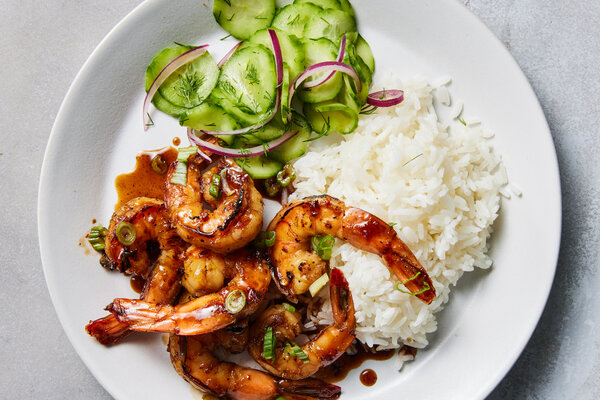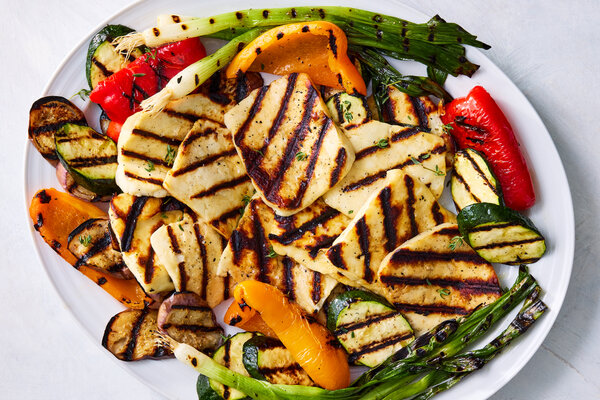9 a.m. Discover the belly of Marseille
Indulge in a flaky, slightly sweet chicken pastilla (3 euros) from the Boulangerie O’Coin Gourmand Pains Traditionnel et Gourmandises before heading for a café crème (2 euros) at the Bar de l’Est, a bare-bones, decades-old café on the Marché de Noailles. Sit facing outward toward the market, on the terrace, and it’ll become obvious why this neighborhood is known as the “belly of Marseille.” Shoppers drag pushcarts through dozens of fruit and vegetable stalls as vendors shout prices on loop, in a rhythm. Trolleys rattle down jagged pavement and trucks drop off produce while residents linger to chat. There are butchers, fishmongers, North African pastry shops and the local establishment Pizza Charly, which has been around since 1962 and is open from 9 a.m., all within earshot.
10 a.m. Shop through three waves of change
Cut across the Rue Longue-des-Capucins toward the Rue d’Aubagne, a central artery of Marseille teeming with vendors and the scent of simmering spices in the air. The Maison Empereur, the oldest hardware store in France, has been around since 1827. Back then, the now working-class neighborhood was bourgeois; Le Père Blaize, the sixth-generation herbalist’s shop, hails from that era. Then stroll to Jiji La Palme d’Or, which has Berber rugs, baskets and lampshades; North Africans immigrated to Marseille en masse in the 1960s. Now, the Épicerie l’Idéal, which sells things like salt-preserved lemons (12 euros) and rose harissa (18 euros), is part of the neighborhood’s new wave of vendors, along with Joli Rouge, a thoughtfully curated antique and vintage store.
12 p.m. Try Comorian food for lunch
Wander over to Douceur Piquante, a Comorian restaurant on a quiet, sunny street lined with trees. The chef Nadjatie Bacar smiles and hums from its open kitchen. The walls, once mint green, are now canary yellow; the restaurant changes the color at least every season. Everything here feels thoughtful, from the fish-tailed water glasses to the bluebell flowers and colorful kale in wine bottles. The menu is short and changes frequently, sometimes with just four items scribbled on a chalkboard. There could be madaba, a Comorian stew made with beef, cassava leaves and coconut milk, or whole-grilled fish with seasonal vegetables (prices vary, but tend to range between 11 and 16 euros). Reservations recommended.
2:30 p.m. Stroll to a 17th century fortress
Walk along the Quai de Rive Neuve past thousands of sailboat masts, and Fort St.-Nicolas, one of the two fortresses that mirror each other across the harbor, will appear. Louis XIV ordered its construction in the 17th century, not just to defend against seaborne invasions, but with cannons pointed inward, toward Marseille, as a warning to any residents considering a revolt. Since then, it had almost always been closed to the public — until spring 2024. Now, on some nights, the fort — also known as the Citadelle de Marseille — effectively transforms into a nightclub with techno music against the backdrop of old walls glowing pink; its summer program includes sculpture workshops, concerts and escape games for kids (10 euros for kids, 15 for adults). Picnics on the grounds are encouraged year-round, or stop for a glass of homemade lemonade (4 euros) or wine (4.5 euros) at La Guinguette du Fort, its outdoor snack bar with panoramic views of the port. Free entry to the complex, with prices varying by activity.
5 p.m. Gaze at Marseille from above
Climb the near-vertical hill or take the bus (1.70 euros) to the Notre-Dame de la Garde, the basilica topped with its golden Madonna holding a baby Jesus in her arms. Its wraparound terrace opens onto the Mediterranean and a collage of Provençal rooftops, framed by villas carved into surrounding hillsides. From here, the Fort St.-Nicolas looks like a sandcastle. Inside, the ceiling is illuminated in an intricate mosaic; and, in the altar area, a mosaic depicts a sailboat crashing into waves. Throughout the church, boats hang from strings overhead, dangling over pews; nautical paintings and tattered rescue buoys are mounted on the walls. These were offerings from sailors looking for protection against rough seas. Much of the structure is currently being restored; it’s set to shed its scaffolding by the end of the year. Free entry.
7 p.m. Dine on pizza
Time spent in Marseille without eating pizza would be sacrilege. It’s the unofficial food of the city, and it’s everywhere — sidewalk stalls, restaurants and a unionized network of trucks. Stroll about 10 minutes down the hill to Pizzeria La Bonne Mère. The owners’ great-great grandparents were part of the wave of Italian immigrants that brought pizza to the city in the early 20th century; now, the pies are a combination of the Neapolitan, Roman and Marseillais styles. The anchovy pie (14 euros), a local specialty, is the real star. Marinated anchovies are draped across a generous dose of bright, garlicky tomato sauce. Homemade pesto ground with a mortar and pestle is drizzled on top with Taggiasca olives. Reservations recommended.
9 p.m. Bar hop in the Cours Julien
Take a cab to the Cours Julien, the North Star of Marseille nightlife. Bass ricochets off buildings as crowds move through a maze of punk clubs, bars and restaurants where delicate flowers are used as garnish. Planète Livre Marseille la Passerelle is a loud, unpretentious bar with an extensive wine selection (3 euros per glass). At Labo’n Heure, a cocktail bar with backlit bottles of Cihuatán rum and kelp-infused gin, the server greets patrons as “mes amies” (cocktails between 7 and 16 euros). But all roads eventually lead to Le Champ de Mars, a Marseille institution that has been around for more than 100 years. Don’t expect fine wines here — this is a place to let loose. Take a shot of tequila (2.50 euros), dance and play foosball under warm, colorful light.










